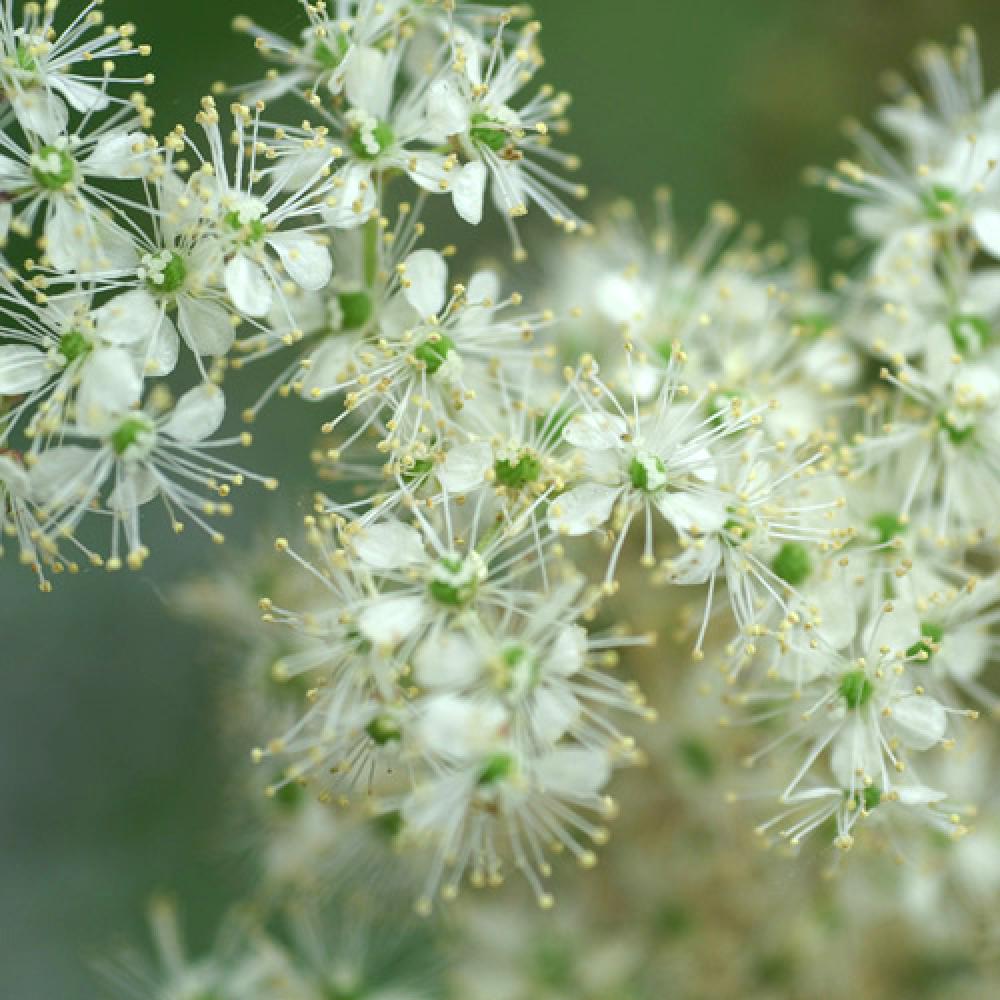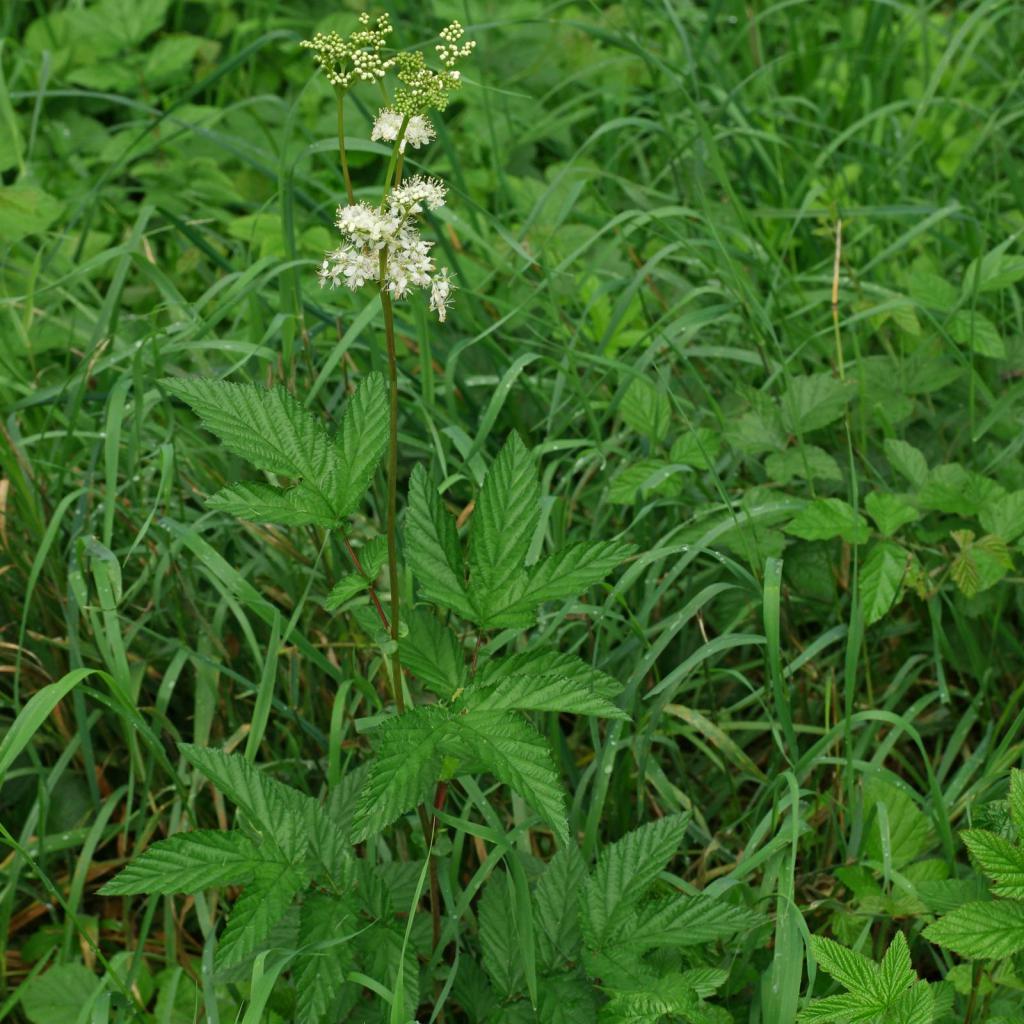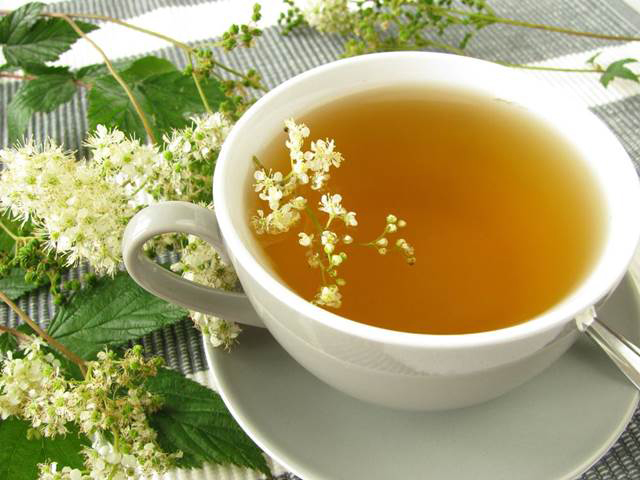Meadowsweet and white-headed, zhivostok and Volzhanka, Ivan the color and the queen of meadows - this is an incomplete list of "folk" names of meadowsweet. This healthy green plant with beautiful fragrant inflorescences has its own fabulous history of origin and a wide range of applications in modern medicine. It has unique healing properties and a small list of contraindications.
The myth of the origin and historical application of meadowsweet
According to an old legend, for the first time the meadowsweet grew on the spot where sea foam fell from the beautiful body of Aphrodite, who first came out of the sea to land. In the place where the foam touched the ground, tall grasses appeared with fragrant white flowers. The birth of the Greek goddess of love and beauty took place on the island of Cyprus in the Mediterranean Sea.
For Celtic priests, the meadowsweet was one of the sacred plants. It was used in magical rites and to treat a mass of ailments. They were cured of colds, diseases of the stomach, joints and muscles. Decoctions of meadowsweet flowers were used in the bites of poisonous snakes as an antidote. In the XVI century, the plant was described in detail by European botanists. Culinary specialists traditionally used all parts of meadowsweet to flavor sweet dishes and various drinks. In Europe, grass and young shoots were used to make salads and various soups.

This plant is an excellent honey plant, so in southern European countries it is called "honey grass". Its smell and flowers attract bees, which then produce tasty, aromatic and healing meadowsweet honey. Dried and brewed meadowsweet flowers have long been used as a diaphoretic and restorative drink. For example, the Indians used the floral infusion of this plant to enhance energy. And in Russia, “mowing” tea was very popular: a mixture of meadowsweet with fireweed and other aromatic herbs. He helped restore lost physical strength and peace of mind.
Blends for snuff were complemented by dry meadowsweet flowers, giving them a sweet, honey flavor. Garlands of fresh flowers meadowsweet decorated wedding ceremonies. Its smell has long been used to flavor housing and clothing.
How to recognize meadowsweet?
This is a perennial herbaceous plant up to a meter and a half with a thick root. It belongs to the family Rosaceae and the subfamily Pink. The upright stalk is solid with beautiful cirrus leaves. The shape of the dark green plate and its edge resemble elm leaves, which is why the meadowsweet is called "leafy". The plant blooms in mid-summer. Flowers are collected in fluffy white-cream or yellowish panicles. They have a unique smell, which can hardly be confused with another flavor. In autumn, the flowers become not large spiral fruits. Another European name for meadowsweet is “the queen of the meadow”. This name is due to the fact that this herb aggressively develops new territories, crowding out other plants. Photos of meadowsweet will help find him in the summer forbs.
Where does the meadowsweet grow?
Scalliformes are common throughout almost the entire Eurasian continent: from Scandinavia and Central Europe to northwestern Asia. It grows mainly in moist meadows and along the edges of boggy forests, near rivers and lakes, as well as in lowland marshes and shady forests. Prefers loamy soils.
Time and methods of plant harvesting
Flowers, like leaves, are picked in the middle of summer at the stage of active flowering. At this time, the concentration of valuable and useful substances in the meadowsweet reaches its maximum. Inflorescences are dried in shaded rooms with a good influx of fresh air or in dryers, maintaining the temperature regime not higher than 40 ° C. Shredded leaves and fragrant panicles of inflorescences are stored in boxes or jars with tight lids for 1 year.
The roots of the meadowsweet are harvested in the early spring or autumn, when the apical part is practically dry. It is dug up and washed in clean cold water, cut into necessary parts. Then laid out in one layer to dry. After drying, the roots can be stored in dry rooms for 3 years. Best of all, they retain their properties in jars with lids or fabric bags.
Useful properties of meadowsweet
In traditional medicine, all parts of the plant are used - root, grass and flowers. Due to its unique properties, the meadowsweet is used for the preparation of medicinal teas, decoctions and tinctures, powders and ointments.

- General strengthening property. Labaznik, due to the ascorbic acid contained in the plant, enhances the general resistance of the body to viruses and infections.
- Analgesic and antipyretic property. In the composition of the meadowsweet there is salicylic acid, which copes with pains of various etiologies and elevated temperature. There is a version that it was from the leaves of this plant that salicin was isolated, which was then used to make aspirin by German chemical scientists.
- Sweatshop property. Meadowsweet strengthens perspiration, helping the body get rid of toxins, salts and water during illness.
- Astringent property. Lubaznik has a local anti-inflammatory effect.
- Wound healing and antibacterial property. Meadowsweet helps accelerate tissue regeneration and inhibit the growth of harmful microorganisms.
- Antiseptic property. Labaznik disinfects wounds and delays the development of negative microflora.
- Sedative This plant relieves or reduces emotional stress. Under the influence of certain substances, the processes of activation and inhibition of the cerebral cortex are balanced.
- Diuretic. Meadowsweet gently enhances kidney function.
- Antifungal. In its chemical composition, grass has antifungal components.
- Hypoglycemic. Plastifolia Lubaznik lowers blood sugar.
Indications for use
In medicine, meadowsweet is used in the treatment of a wide range of diseases of various systems and organs. So, for example, meadowsweet extract is used to treat wounds, burns and trophic ulcers. As an anti-inflammatory agent, meadowsweet decoction is used for skin diseases. Rinses and lotions relieve the condition of the patient with periodontal disease, gingivitis and stomatitis. Flower tincture of meadowsweet reduces blood pressure and enhances cerebral circulation, and also helps to thin the blood and dissolve blood clots in the vessels. To treat diseases of the reproductive and urinary system, meadowsweet is used fresh and dried.
Lubaznik vybolistny: contraindications
Labaznik is not recommended for use with low blood pressure, colitis and poor blood coagulation. When using this herb in any form, you need to remember its diaphoretic effect and avoid hypothermia. The use of meadowsweet for the treatment of children and pregnant women should begin only after consultation with a competent doctor. There is no single medical opinion regarding the safety of meadowsweet.
Application in traditional medicine
Herbalists call meadowsweet a remedy for forty ailments. Its pharmacological action is multifaceted. It has a lasting and lasting effect. Considering the beneficial properties of meadowsweet and contraindications for use, it can be successfully used in the treatment of ailments of various organs and systems.
A decoction of rhizomes of meadowsweet is used for warm douching and enemas for gynecological diseases and diarrhea. Joint diseases, thyroid diseases, diabetes and malignant tumors are also treated with decoctions from this plant. Compresses from the broth of meadowsweet heal and disinfect wounds. Ointments with the addition of meadowsweet have a healing, regenerating and soothing effect in various skin diseases. Decoction from the grass of the meadowsweet is used in the treatment of pneumonia, bronchitis and chronic respiratory diseases. A decoction of meadowsweet flowers relieves a hangover syndrome and helps to cope with the symptoms of ethanol poisoning. Shredded meadowsweet flowers are used to treat diaper rash, in particular, instead of talcum powder for babies.

A fragrant tea drink from meadowsweet flowers increases the amount of fluid that is eliminated from the body. It is used for diseases of the urinary system, gout and hypertension. It is believed that the meadowsweet is able to reduce blood pressure by 40% in 20 minutes. This tea is indicated for diseases of the stomach, rheumatism and heart ailments to reduce pain.
The smell of meadowsweet repels blood-sucking insects. Exposed areas of the skin are rubbed with plant flowers. They can be fresh or dried, but retaining the smell.
A recipe for fortifying tea with meadowsweet
Monocomponent meadowsweet tea has a yellow or light brown color, the taste of the drink is sweetish with honey notes. One teaspoon of fragrant flowers of meadowsweet is added to a glass of boiling water. Drink after 5 minutes of insisting. Such tea has a beneficial effect on the digestive system, the urinary organs and enhances general immunity.